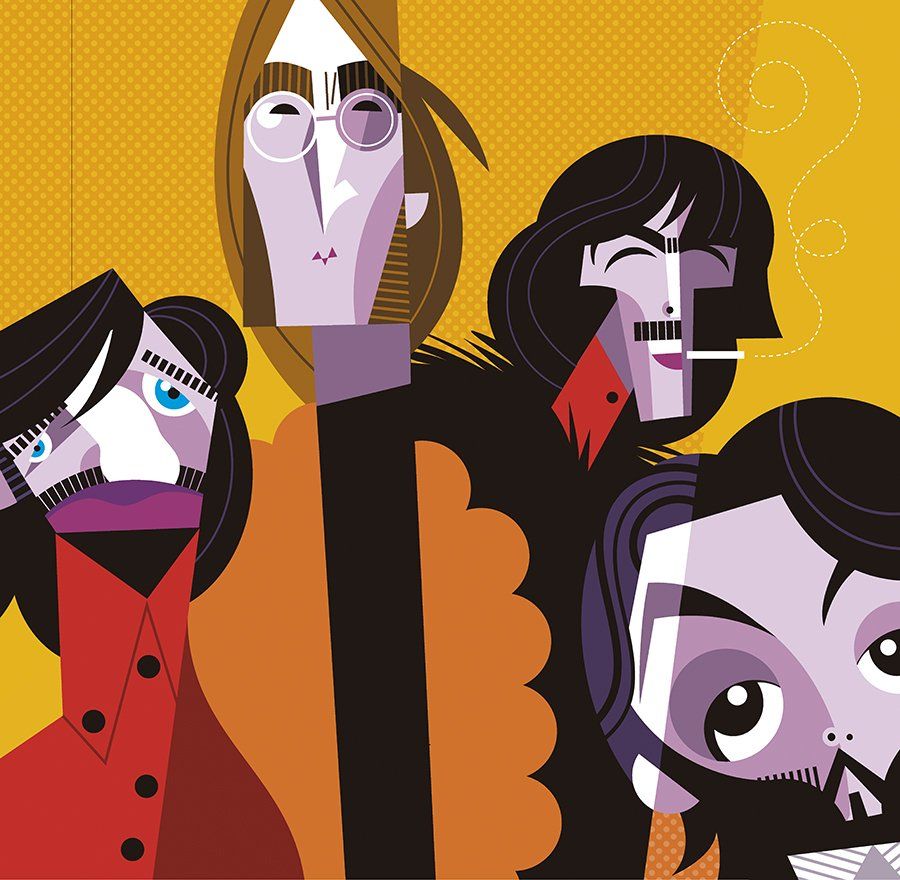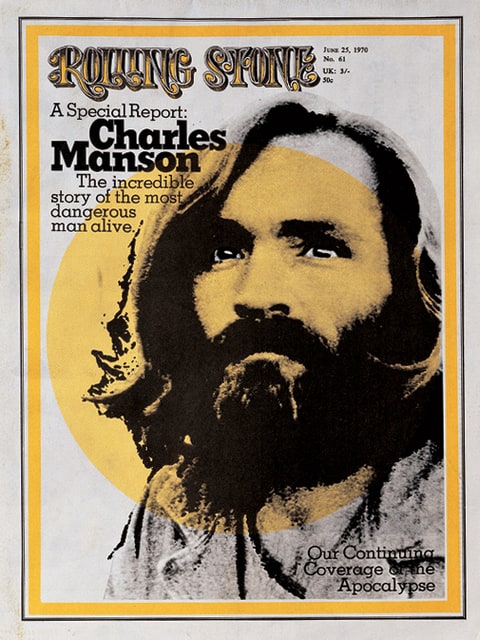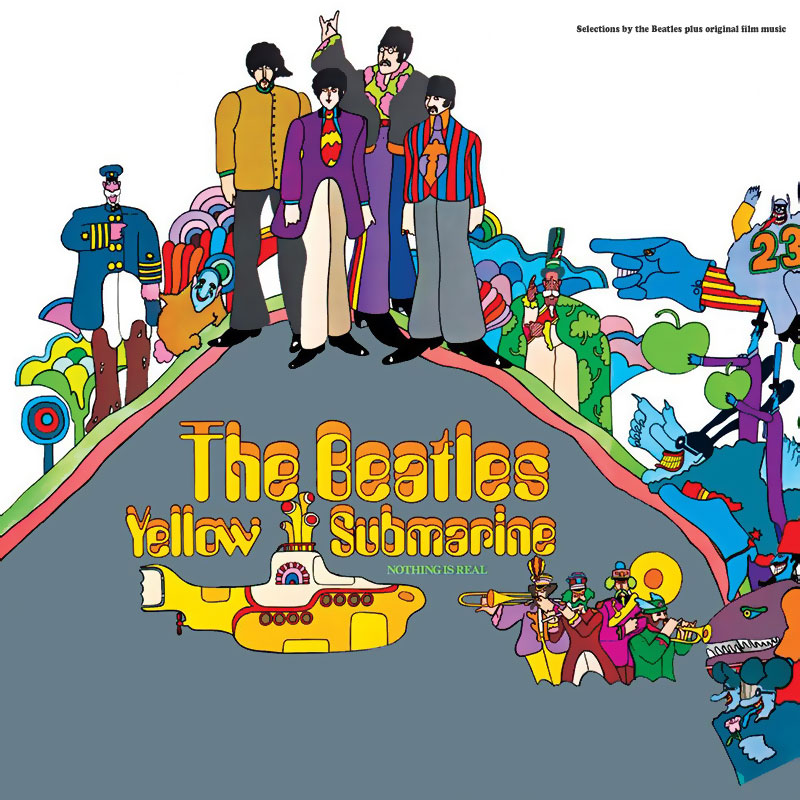Their self titled double album masterpiece has been described as the most diverse record in pop history.
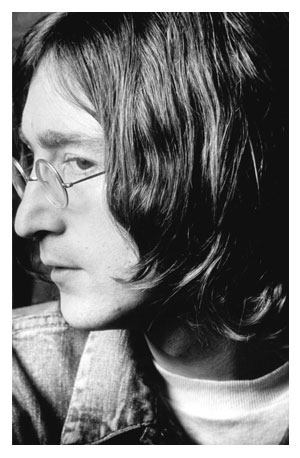
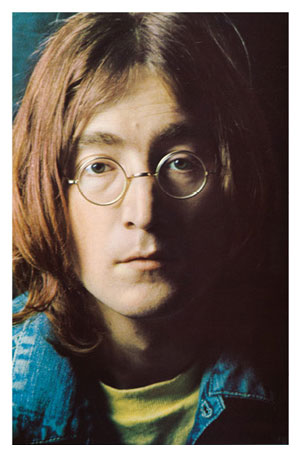
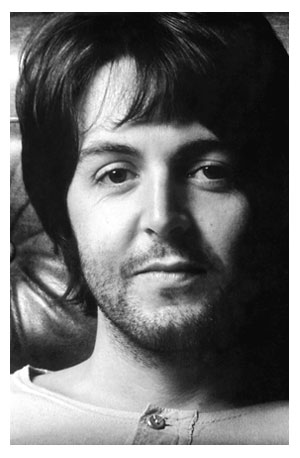
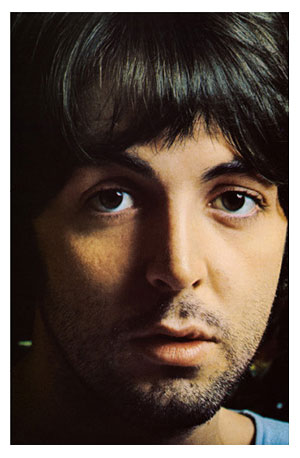
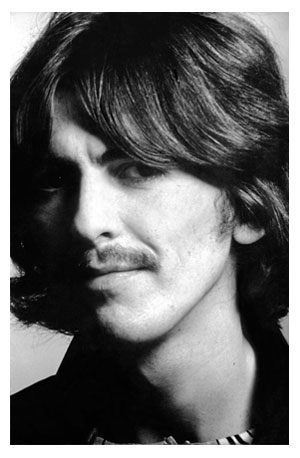
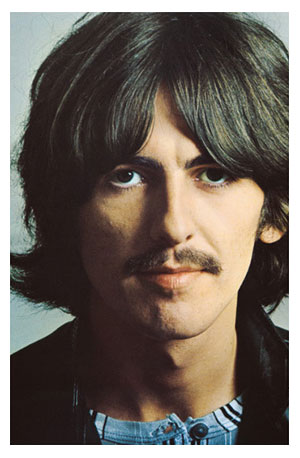
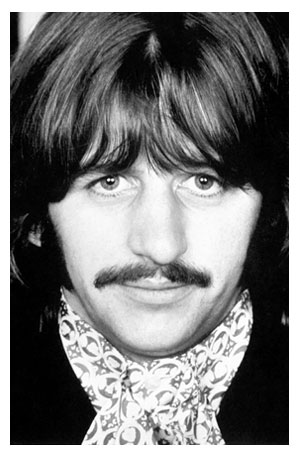
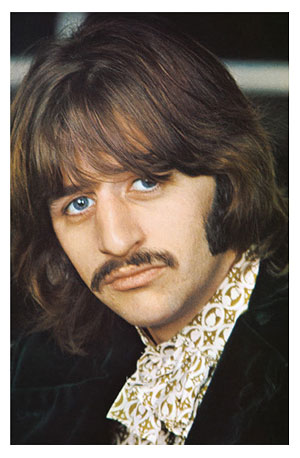
The photographic portraits taken by John Kelly in the autumn of 1968 have themselves become iconic.
On one hand, The Beatles (aka the White Album) is the most diverse record that the Beatles, or probably any pop band in history, has ever made. On the other, as Paul McCartney recalled, “That was the tension album. We were all in the midst of that psychedelic thing, or just coming out of it. In any case, it was weird. Never before had we recorded with beds in the studio and people visiting for hours on end: business meetings and all that. There was a lot of friction during that album. We were just about to break up, and that was tense in itself.” Lester Bangs described it perfectly: “It was the first album by The Beatles or in the history of rock by four solo artist in one band.” In saying that Bangs was simply following John Lennon’s lead.
It was the first album by The Beatles or in the history of rock by four solo artist in one band.
on the White Album
Almost five months in the making, nearly 94 minutes in length, it had no graphics or text other than the band’s name embossed on its plain white sleeve. The Beatles was their ninth official British album release and fifteenth American album. It was also the first full album project the group undertook following the death of their manager, Brian Epstein, in August of the previous year. The album is recognised for its fragmentary style and diverse range of genres, including folk, British blues, ska, music hall and the avant-garde. It has since been viewed by some critics as a postmodern work, as well as among the greatest albums of all time. It went on to become their best-selling album ever with certified sales at over 24 million units by the Recording Industry Association of America (RIAA) making it the fourth-highest certified release in U.S. history.
Most of the songs on the album were written during March and April 1968 at a Transcendental Meditation course in Rishikesh, India. There, the only western instrument available to the band was the acoustic guitar; some of these songs remained acoustic on The Beatles and were recorded solo, or only by part of the group. The production aesthetic ensured that the album’s sound was scaled-down and less reliant on studio innovation than all their releases since 1966’s Revolver. The Beatles also broke with the band’s recent tradition of incorporating several musical styles in one song by keeping each piece of music consistently faithful to a select genre.
At the end of May 1968, the Beatles returned to EMI Studios in London to commence recording sessions that lasted until mid-October. During these sessions, arguments broke out among the foursome over creative differences and John Lennon’s new partner, Yoko Ono, whose constant presence subverted the Beatles’ policy regarding wives and girlfriends in the studio. After a series of problems, including producer George Martin taking a sudden leave of absence and engineer Geoff Emerick suddenly quitting, Ringo Starr left the band briefly in August. The same tensions continued throughout the following year and led to the band’s break-up.
The Beatles received favourable reviews from the majority of music critics; detractors found its satirical songs unimportant and apolitical amid the turbulent political and social climate of 1968. Nonetheless, The Beatles topped record charts in Britain and the United States. Although no singles were issued in either territory, the songs Hey Jude and Revolution originated from the same recording sessions and were issued on a single in August 1968.
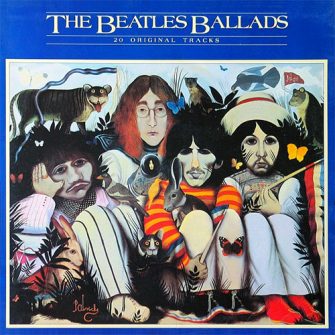
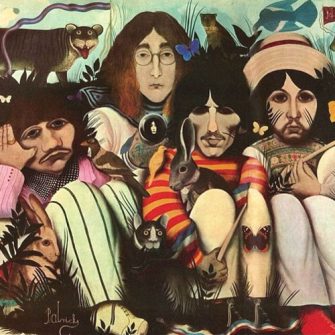
Artist John Patrick Byrne – A Doll’s House 1968
The White Album’s original working title was A Doll’s House, which is the name of Henrik Ibsen’s masterpiece 19th-century play. In addition, according to Geoffrey Giuliano, author of The Beatles Album, an illustration was prepared for the cover of A Doll’s House by the famed artist John Patrick Byrne (aka Patrick). However, the working title was changed when the British progressive band Family released its debut album, similarly titled Music in a Doll’s House on 19 July 1968. The art later resurfaced as the cover for the compilation album The Beatles Ballads twelve years later.
Cultural Responses
Ian MacDonald, in his book Revolution in the Head, argues that The Beatles was the album in which the band’s cryptic messages to its fan base became not merely vague but intentionally and perhaps dangerously open-ended, citing oblique passages in songs like Glass Onion e.g., “the walrus was Paul” and Piggies “what they need’s a damn good whacking”.
These pronouncements, and many others on the album, came to attract extraordinary popular interest at a time when more of the world’s youth were using drugs recreationally and looking for spiritual, political, and strategic advice from the Beatles.
Steve Turner, too, in his book A Hard Day’s Write, maintains that, with this album, “The Beatles had perhaps laid themselves open to misinterpretation by mixing up the languages of poetry and nonsense.”
Bob Dylan’s songs had been similarly mined for hidden meanings, but the massive countercultural analysis of The Beatles surpassed anything that had gone before. Even Lennon’s seemingly direct engagement with the tumultuous political issues of 1968 in Revolution 1 carried a nuanced obliqueness, and ended up sending messages the author may not have intended. In the album’s version of the song, Lennon advises those who talk about destruction to count me out. As MacDonald notes, however, Lennon then follows the sung word out with the spoken word in.
At the time of the album’s release — which followed the up-tempo single version of the song, Revolution, in which Lennon definitely wanted to be counted out — that single word in was taken by many on the radical left as Lennon’s acknowledgment, after considered thought, that violence in the pursuit of political aims was indeed justified in some cases. At a time of increasing unrest in the streets and campuses of Paris and Berkeley, the album’s lyrics seemed to many to mark a reversal of Lennon’s position on the question, which was hotly debated during this period.
On the one I released as a single, we did it in a much more commercial style… and I left out the ‘count me in’ because I’m a coward, I don’t want to be killed.
on Revolution
However, the recording chronology belies the interpretation that from the single to the album Lennon moved from a definite position to one of ambivalence, since despite the single’s earlier release it was the album version that was recorded first.
On release, The Beatles gained highly favourable reviews from the majority of music critics. Others bemoaned its length or found that the music lacked the adventurous quality that had distinguished Sgt. Pepper. According to the author Ian Inglis: “Whether positive or negative, all assessments of The Beatles drew attention to its fragmentary style. However, while some complained about the lack of a coherent style, others recognized this as the album’s raison d’être.”
In The Observer, Tony Palmer wrote that “if there is still any doubt that Lennon and McCartney are the greatest songwriters since Schubert”, the album “should surely see the last vestiges of cultural snobbery and bourgeois prejudice swept away in a deluge of joyful music making””a major success” and “far more imaginative” than Sgt. Pepper or Magical Mystery Tour, due to the band’s improved songwriting and their relying less on the studio tricks of those earlier works. In The Sunday Times, Derek Jewell hailed it as “the best thing in pop since Sgt. Pepper” and concluded: “Musically, there is beauty, horror, surprise, chaos, order. And that is the world; and that is what The Beatles are on about. Created by, creating for, their age.” Although he dismissed Revolution 9 as a “pretentious” example of “idiot immaturity”, the NME’s Alan Smith declared “God Bless You, Beatles!” to the majority of the album. Jann Wenner of Rolling Stone called it “the history and synthesis of Western music”, and the group’s best album yet. Wenner contended that they were allowed to appropriate other styles and traditions into rock music because their ability and identity were “so strong that they make it uniquely theirs, and uniquely the Beatles. They are so good that they not only expand the idiom, but they are also able to penetrate it and take it further.”
Among the less favourable critiques, Time magazine’s reviewer wrote that The Beatles showcased the “best abilities and worst tendencies” of the Beatles, as it is skilfully performed and sophisticated, but lacks a “sense of taste and purpose”. William Mann of The Times opined that, in their over-reliance on pastiche and “private jokes”, Lennon and McCartney had ceased to progress as songwriters, yet he deemed the release to be “The most important musical event of the year” and acknowledged: “these 30 tracks contain plenty to be studied, enjoyed and gradually appreciated more fully in the coming months.” In his review for The New York Times, Nik Cohn considered the album “boring beyond belief” and said that over half of its songs were “profound mediocrities”. In a 1971 column, Robert Christgau of The Village Voice described the album as both “their most consistent and probably their worst”, and referred to its songs as a “pastiche of musical exercises”. Nonetheless, he ranked it as the tenth best album of 1968 in his ballot for Jazz & Pop magazine’s annual critics poll.
The release also coincided with public condemnation of Lennon’s treatment of Cynthia, and of his and Ono’s joint projects, particularly Two Virgins. The British authorities similarly displayed a less tolerant attitude towards the Beatles, when London Drug Squad officers arrested Lennon and Ono in October 1968 for marijuana possession, a charge that Lennon claimed was false.
In September 1969, a rumor of Paul McCartney’s supposed death began spreading across college campuses in the U.S. In October of 1969 a Detroit radio program began to promote theories based on clues supposedly left on The Beatles and other Beatles albums suggesting that McCartney had died in November 1966 and was secretly replaced by a look-alike.
The ensuing hunt for such clues to a supposed cover-up that the Beatles presumably wanted to suppress (and simultaneously publicize) has become a classic example of the development and persistence of urban legends.
The rumors declined after an interview with McCartney, who had been secluded with his family in Scotland, was published in Life magazine in Nov. 1969.
Lyrical Misinterpretations
The album’s lyrics progressed from being vague to open-ended and prone to misinterpretation, such as Glass Onion (e.g., “the walrus was Paul”) and Piggies (“what they need’s a damn good whacking”). In the case of Back in the U.S.S.R., the words were interpreted by Christian evangelist David Noebel as further proof of the Beatles’ compliance in a Communist plot to brainwash American youth. According to MacDonald, the counterculture of the 1960s analysed The Beatles above and beyond all of the band’s previous releases. Lennon’s lyrics on Revolution 1 were misinterpreted with messages he did not intend. In the album version, he advises those who “talk about destruction” to “count me out”. Lennon then follows the sung word “out” with the spoken word “in”. At the time of the album’s release, which followed, chronologically, the up-tempo single version of the song, Revolution, that single word “in” was taken by the radical political left as Lennon’s endorsement of politically motivated violence, which followed the May 1968 Paris riots. However, the album version was recorded first.
The search for hidden meanings within the songs reached its low point when cult leader Charles Manson first heard the album not long after it was released. He had already claimed to find hidden meanings in songs from earlier Beatles albums, but in The Beatles he interpreted prophetic significance in several of the songs, including Blackbird, Piggies (particularly the line “what they need’s a damn good whacking”), Helter Skelter, Revolution 1 and Revolution 9, and interpreted the lyrics as a sign of imminent violence or war. He played the album repeatedly to his followers, the Manson family, and convinced them that it was an apocalyptic message predicting an uprising of oppressed races, drawing parallels with chapter 9 of the Book of Revelation.
Prosecutor Vincent Bugliosi wrote a best-selling book about the Manson Family that explicated, among other things, the cult’s fixation with identifying hidden messages within The Beatles album. Bugliosi’s book was entitled Helter Skelter, the term Manson took from the album’s song title and construed as the impending conflict he believed was fast approaching.
The album’s association with a high-profile mass murder was one of many factors that helped to deepen the accelerating divide between those who were profoundly skeptical of the youth culture movement unfolding in the mid to late 60s in the U.K., the U.S., and elsewhere, and those who admired its openness and spontaneity.
Popular Music and Postmodernism
On the 40th anniversary of the album’s release the Vatican newspaper L’Osservatore Romano published a lengthy article which declared that Forty years later, this album remains a type of magical musical anthology: 30 songs you can go through and listen to at will, certain of finding some pearls that even today remain unparalleled. Forgiving Lennon’s “more popular than Jesus” remark, the paper called the White Album the creative summit of the Beatles career, comparing it favorably to contemporary music and taking note of the now antiquated equipment used, concluding that a listening experience like that offered by the Beatles is truly rare.
Sociologists Michael Katovich and Wesley Longhofer write that the album’s release created “a collective appreciation of it as a ‘state-of-the-art’ rendition of the current pop, rock, and folk-rock sounds”. The majority of historians categorise The Beatles as postmodern, emphasising aesthetic and stylistic features of the album; Inglis, for example, lists bricolage, fragmentation, pastiche, parody, reflexivity, plurality, irony, exaggeration, anti-representation and meta-art, and says that it “has been designated as popular music’s first postmodern album”. Authors such as Fredric Jameson, Andrew Goodwin and Kenneth Womack instead situate all of the Beatles’ work within a modernist stance, based either on their artificiality or their ideological stance of progress through love and peace. Scapelliti cites The Beatles as the source of “the freeform nihilism echoed … in the punk and alternative music genres”. In his introduction to Rolling Stone’s list of the 100 Greatest Beatles Songs, Elvis Costello comments on the band’s pervasive influence into the 21st century and concludes: “The scope and license of the White Album has permitted everyone from OutKast to Radiohead to Green Day to Joanna Newsom to roll their picture out on a broader, bolder canvas.”
In early 2013, the Recess Gallery in New York City’s SoHo neighbourhood presented We Buy White Albums, an installation by artist Rutherford Chang. The piece was in the form of a record store in which nothing but original pressings of the LP was on display. Chang created a recording in which the sounds of one hundred copies of side one of the LP were overlaid.
The Charts
Promotional poster issued by Apple/Capitol 1968.
It was their first studio album in almost eighteen months, and coming after the blockbuster success of Sgt. Pepper, expectations were high at the time of the release of The Beatles. The album debuted at number one in the U.K. on 1 December 1968, becoming their third album to do so, after Help! and Revolver. It spent seven weeks at the top of the U.K. charts, (including the entire competitive Christmas season) until it was replaced by the Seekers’ Best of the Seekers on 25 January 1969, dropping to #2. However, the album returned to the top spot the following week, spending an eighth week once again in the #1 position on the charts. It returned to the top spot for a final week on 1 February 1969, then spent a further four weeks in the top 10, and a total of 24 weeks in the top 40.
In the United States, the album was received with huge commercial success. Although it carried a list price of $11.79 (a single album was selling for $3.98), their double album The Beatles sold 4 million units during its first four weeks alone, a record for any double album up to that time. It debuted at #11 on the U.S. charts, then reached #2, and finally peaked at #1 in its third week, spending a total of nine weeks at the top. In all, The Beatles spent 155 weeks on the Billboard 200. According to the Recording Industry Association of America (RIAA), The Beatles is The Beatles’ best-selling album at 19-times platinum and comes in at #12 in the list of the best selling albums of all time.
The White Album was particularly notable for blocking the Beatles follow-up album, Yellow Submarine, which was released on 13 January 1969 in the U.S. and on 17 January 1969 in the U.K. It peaked at #3 on 8 February 1969, the same week The White Album was dominating the second position on the charts.
It then spent another four weeks in the Top 10 before dropping down the charts. In all, The Beatles spent 24 weeks on the U.K. charts, a far cry compared to the over 200 weeks spent by Sgt. Pepper.
The Mono Version
The Beatles was the last Beatles’ album to be released with a unique, alternate mono mix, albeit one issued only in the U.K. and a few other countries. Twenty-nine of the album’s 30 tracks, Revolution 9, which was a direct reduction of the stereo master, being the only exception, exist in official alternate mono mixes. Several of these mono mixes are quite different from the stereo versions, such as Helter Skelter eliminates the fade-in at the end of the song (and Starr’s ending scream), and the fade-out of Yer Blues is 11 seconds longer on the mono mix.
Beatles’ albums after The Beatles (except Yellow Submarine in the U.K.) occasionally had mono pressings in certain countries such as Brazil, but these editions, Yellow Submarine, Abbey Road and Let It Be, were in each case fold-downs from the regular stereo mixes.
By 1968 in the U.S., mono records were already being phased out, the U.S. release of The Beatles was the first Beatles LP to be issued in the U.S. in stereo only. The mono version of The Beatles was not made available worldwide on 9 September 2009, as part of the Beatles in Mono CD boxed set released by Apple Records. A reissue of the original mono LP was released worldwide in September 2014.
The Beatles self titled double album masterpiece has been described as the most diverse record in pop history
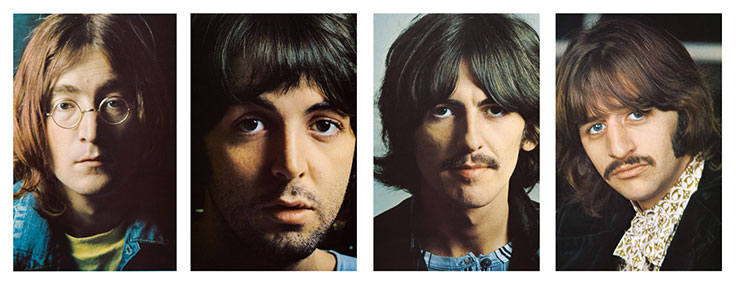
The photographic portraits taken by John Kelly in the autumn of 1968 have themselves become iconic.
On one hand, The Beatles (aka the White Album) is the most diverse record that the Beatles, or probably any pop band in history, has ever made. On the other, as Paul McCartney recalled, “That was the tension album. We were all in the midst of that psychedelic thing, or just coming out of it. In any case, it was weird. Never before had we recorded with beds in the studio and people visiting for hours on end: business meetings and all that. There was a lot of friction during that album. We were just about to break up, and that was tense in itself.” Lester Bangs described it perfectly: “It was the first album by The Beatles or in the history of rock by four solo artist in one band.” In saying that Bangs was simply following John Lennon’s lead.
It was the first album by The Beatles or in the history of rock by four solo artist in one band.
~ Lester Bangs,
on the White Album
Almost five months in the making, nearly 94 minutes in length, it had no graphics or text other than the band’s name embossed on its plain white sleeve. The Beatles was their ninth official British album release and fifteenth American album. It was also the first full album project the group undertook following the death of their manager, Brian Epstein, in August of the previous year. The album is recognised for its fragmentary style and diverse range of genres, including folk, British blues, ska, music hall and the avant-garde. It has since been viewed by some critics as a postmodern work, as well as among the greatest albums of all time. It went on to become their best-selling album ever with certified sales at over 24 million units by the Recording Industry Association of America (RIAA) making it the fourth-highest certified release in U.S. history.
Most of the songs on the album were written during March and April 1968 at a Transcendental Meditation course in Rishikesh, India. There, the only western instrument available to the band was the acoustic guitar; some of these songs remained acoustic on The Beatles and were recorded solo, or only by part of the group. The production aesthetic ensured that the album’s sound was scaled-down and less reliant on studio innovation than all their releases since 1966’s Revolver. The Beatles also broke with the band’s recent tradition of incorporating several musical styles in one song by keeping each piece of music consistently faithful to a select genre.
At the end of May 1968, the Beatles returned to EMI Studios in London to commence recording sessions that lasted until mid-October. During these sessions, arguments broke out among the foursome over creative differences and John Lennon’s new partner, Yoko Ono, whose constant presence subverted the Beatles’ policy regarding wives and girlfriends in the studio. After a series of problems, including producer George Martin taking a sudden leave of absence and engineer Geoff Emerick suddenly quitting, Ringo Starr left the band briefly in August. The same tensions continued throughout the following year and led to the band’s break-up.
The Beatles received favourable reviews from the majority of music critics; detractors found its satirical songs unimportant and apolitical amid the turbulent political and social climate of 1968. Nonetheless, The Beatles topped record charts in Britain and the United States. Although no singles were issued in either territory, the songs “Hey Jude” and “Revolution” originated from the same recording sessions and were issued on a single in August 1968.


Illustration prepared for the cover of A Doll’s House by famed artist John Patrick Byrne (aka Patrick).
The White Album’s original working title was A Doll’s House, which is the name of Henrik Ibsen’s masterpiece 19th-century play. In addition, according to Geoffrey Giuliano, author of The Beatles Album, an illustration was prepared for the cover of A Doll’s House by the famed artist John Byrne (aka Patrick). However, the working title was changed when the British progressive band Family released its debut album, similarly titled Music in a Doll’s House on the 19 July 1968. That album, co-produced by Dave Mason of Traffic, featured an ambitious psychedelic sound.
Cultural Responses
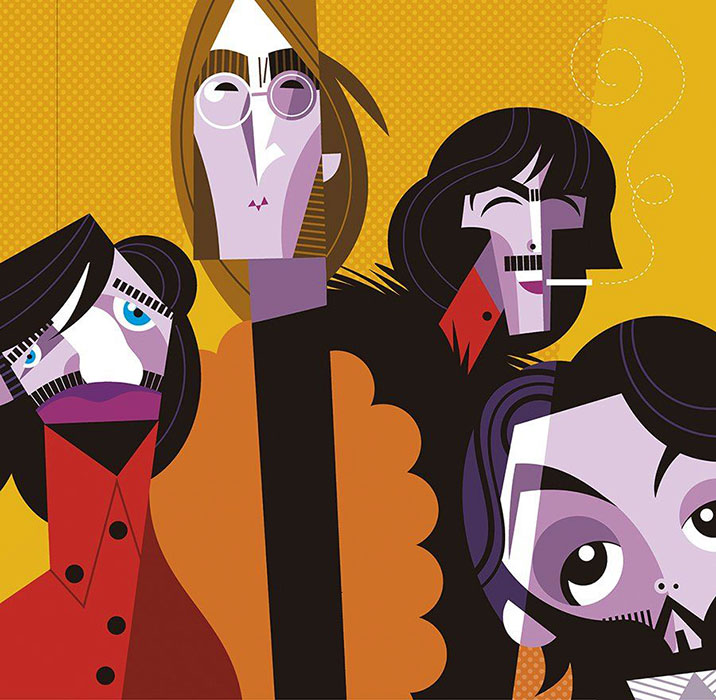
Illustration by Pablo Lobato
Ian MacDonald, in his book Revolution in the Head, argues that The Beatles was the album in which the band’s cryptic messages to its fan base became not merely vague but intentionally and perhaps dangerously open-ended, citing oblique passages in songs like Glass Onion (e.g., “the walrus was Paul”) and Piggies (“what they need’s a damn good whacking”).
These pronouncements and many others on the album came to attract extraordinary popular interest at a time when more of the world’s youth were using drugs recreationally and looking for spiritual, political, and strategic advice from the Beatles. Steve Turner, too, in his book A Hard Day’s Write, maintains that with this album, “The Beatles had perhaps laid themselves open to misinterpretation by mixing up the languages of poetry and nonsense.”
Steve Turner, too, in his book A Hard Day’s Write, maintains that, with this album, “The Beatles had perhaps laid themselves open to misinterpretation by mixing up the languages of poetry and nonsense.”
Bob Dylan’s songs had been similarly mined for hidden meanings, but the massive countercultural analysis of The Beatles surpassed anything that had gone before. Even Lennon’s seemingly direct engagement with the tumultuous political issues of 1968 in Revolution 1 carried a nuanced obliqueness and ended up sending messages the author may not have intended. In the album’s version of the song, Lennon advises those who “talk about destruction” to “count me out.” As MacDonald notes, however, Lennon then follows the sung word “out” with the spoken word in.
On the one I released as a single, we did it in a much more commercial style… and I left out the ‘count me in’ because I’m a coward, I don’t want to be killed.
~ John Lennon
At the time of the album’s release, which followed the up-tempo single version of the song, Revolution, in which Lennon definitely wanted to be counted out,, that single word in was taken by many on the radical left as Lennon’s acknowledgment, after considered thought, that violence in the pursuit of political aims was indeed justified in some cases. At a time of increasing unrest in the streets and campuses of Paris and Berkeley, the album’s lyrics seemed to many to mark a reversal of Lennon’s position on the question, which was hotly debated during this period.
However, the recording chronology belies the interpretation that from the single to the album Lennon moved from a definite position to one of ambivalence, since despite the single’s earlier release it was the album version that was recorded first.
On release, The Beatles gained highly favourable reviews from the majority of music critics. Others bemoaned its length or found that the music lacked the adventurous quality that had distinguished Sgt. Pepper. According to the author Ian Inglis: “Whether positive or negative, all assessments of The Beatles drew attention to its fragmentary style. However, while some complained about the lack of a coherent style, others recognized this as the album’s raison d’être.”
In The Observer, Tony Palmer wrote that “if there is still any doubt that Lennon and McCartney are the greatest songwriters since Schubert”, the album “should surely see the last vestiges of cultural snobbery and bourgeois prejudice swept away in a deluge of joyful music making””a major success” and “far more imaginative” than Sgt. Pepper or Magical Mystery Tour, due to the band’s improved songwriting and their relying less on the studio tricks of those earlier works. In The Sunday Times, Derek Jewell hailed it as “the best thing in pop since Sgt. Pepper” and concluded: “Musically, there is beauty, horror, surprise, chaos, order. And that is the world; and that is what The Beatles are on about. Created by, creating for, their age.” Although he dismissed Revolution 9 as a “pretentious” example of “idiot immaturity”, the NME’s Alan Smith declared “God Bless You, Beatles!” to the majority of the album. Jann Wenner of Rolling Stone called it “the history and synthesis of Western music”, and the group’s best album yet. Wenner contended that they were allowed to appropriate other styles and traditions into rock music because their ability and identity were “so strong that they make it uniquely theirs, and uniquely the Beatles. They are so good that they not only expand the idiom, but they are also able to penetrate it and take it further.”
Among the less favourable critiques, Time magazine’s reviewer wrote that The Beatles showcased the “best abilities and worst tendencies” of the Beatles, as it is skilfully performed and sophisticated, but lacks a “sense of taste and purpose”. William Mann of The Times opined that, in their over-reliance on pastiche and “private jokes”, Lennon and McCartney had ceased to progress as songwriters, yet he deemed the release to be “The most important musical event of the year” and acknowledged: “these 30 tracks contain plenty to be studied, enjoyed and gradually appreciated more fully in the coming months.” In his review for The New York Times, Nik Cohn considered the album “boring beyond belief” and said that over half of its songs were “profound mediocrities”. In a 1971 column, Robert Christgau of The Village Voice described the album as both “their most consistent and probably their worst”, and referred to its songs as a “pastiche of musical exercises”. Nonetheless, he ranked it as the tenth best album of 1968 in his ballot for Jazz & Pop magazine’s annual critics poll.
The release also coincided with public condemnation of Lennon’s treatment of Cynthia, and of his and Ono’s joint projects, particularly Two Virgins. The British authorities similarly displayed a less tolerant attitude towards the Beatles, when London Drug Squad officers arrested Lennon and Ono in October 1968 for marijuana possession, a charge that Lennon claimed was false.
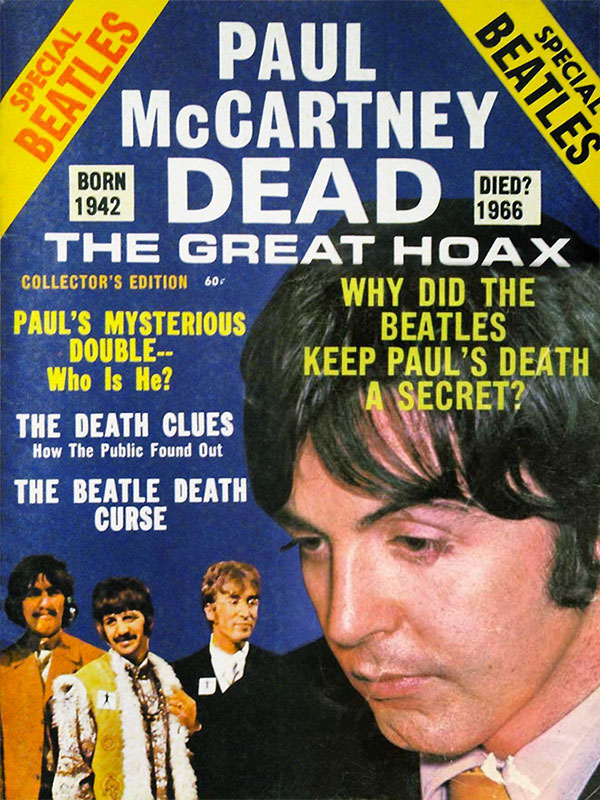
In September 1969, a rumor of McCartney’s supposed death began spreading across college campuses in the U.S. In October of 1969 a Detroit radio program began to promote theories based on clues supposedly left on The Beatles and other Beatles albums suggesting that McCartney had died in November 1966 and was secretly replaced by a look-alike. The ensuing hunt for such clues to a supposed cover-up that the Beatles presumably wanted to suppress, and simultaneously publicize, has become a classic example of the development and persistence of urban legends. The rumors declined after a contemporary interview with Paul McCartney, who had been secluded with his family in Scotland, was published in Life magazine in November 1969.
The ensuing hunt for such clues to a supposed cover-up that the Beatles presumably wanted to suppress (and simultaneously publicize) has become a classic example of the development and persistence of urban legends.
The rumors declined after an interview with McCartney, who had been secluded with his family in Scotland, was published in Life magazine in Nov. 1969.
Lyrical Misinterpretations
The album’s lyrics progressed from being vague to open-ended and prone to misinterpretation, such as Glass Onion (e.g., “the walrus was Paul”) and Piggies (“what they need’s a damn good whacking”). In the case of Back in the U.S.S.R., the words were interpreted by Christian evangelist David Noebel as further proof of the Beatles’ compliance in a Communist plot to brainwash American youth. According to MacDonald, the counterculture of the 1960s analysed The Beatles above and beyond all of the band’s previous releases. Lennon’s lyrics on Revolution 1 were misinterpreted with messages he did not intend. In the album version, he advises those who “talk about destruction” to “count me out”. Lennon then follows the sung word “out” with the spoken word “in”. At the time of the album’s release, which followed, chronologically, the up-tempo single version of the song, Revolution, that single word “in” was taken by the radical political left as Lennon’s endorsement of politically motivated violence, which followed the May 1968 Paris riots. However, the album version was recorded first.
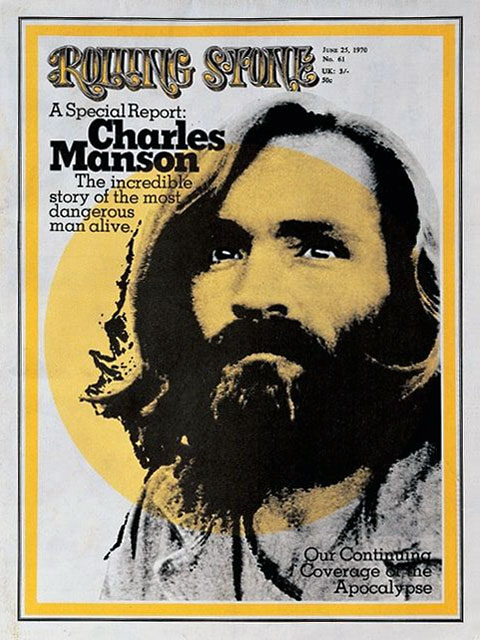
Rolling Stone Issue No. 61 – June 25, 1970
Prosecutor Vincent Bugliosi wrote a best-selling book about the Manson Family that explicated, among other things, the cult’s fixation with identifying hidden messages within The Beatles album. Bugliosi’s book was entitled Helter Skelter, the term Manson took from the album’s song title and construed as the impending conflict he believed was fast approaching.
The album’s association with a high-profile mass murder was one of many factors that helped to deepen the accelerating divide between those who were profoundly skeptical of the youth culture movement unfolding in the mid to late 60s in the U.K., the U.S., and elsewhere, and those who admired its openness and spontaneity.
Pop Music and Postmodernism
On the 40th anniversary of the album’s release the Vatican newspaper L’Osservatore Romano published a lengthy article which declared that Forty years later, this album remains a type of magical musical anthology: 30 songs you can go through and listen to at will, certain of finding some pearls that even today remain unparalleled. Forgiving Lennon’s “more popular than Jesus” remark, the paper called the White Album the creative summit of the Beatles career, comparing it favorably to contemporary music and taking note of the now antiquated equipment used, concluding that a listening experience like that offered by the Beatles is truly rare.
Sociologists Michael Katovich and Wesley Longhofer write that the album’s release created “a collective appreciation of it as a ‘state-of-the-art’ rendition of the current pop, rock, and folk-rock sounds”. The majority of historians categorise The Beatles as postmodern, emphasising aesthetic and stylistic features of the album; Inglis, for example, lists bricolage, fragmentation, pastiche, parody, reflexivity, plurality, irony, exaggeration, anti-representation and meta-art, and says that it “has been designated as popular music’s first postmodern album”. Authors such as Fredric Jameson, Andrew Goodwin and Kenneth Womack instead situate all of the Beatles’ work within a modernist stance, based either on their artificiality or their ideological stance of progress through love and peace. Scapelliti cites The Beatles as the source of “the freeform nihilism echoed … in the punk and alternative music genres”. In his introduction to Rolling Stone’s list of the 100 Greatest Beatles Songs, Elvis Costello comments on the band’s pervasive influence into the 21st century and concludes: “The scope and license of the White Album has permitted everyone from OutKast to Radiohead to Green Day to Joanna Newsom to roll their picture out on a broader, bolder canvas.”
In early 2013, the Recess Gallery in New York City’s SoHo neighbourhood presented We Buy White Albums, an installation by artist Rutherford Chang. The piece was in the form of a record store in which nothing but original pressings of the LP was on display. Chang created a recording in which the sounds of one hundred copies of side one of the LP were overlaid.
The Charts
It was their first studio album in almost eighteen months, and coming after the blockbuster success of Sgt. Pepper, expectations were high at the time of the release of The Beatles. The album debuted at number one in the U.K. on 1 December 1968, becoming their third album to do so, after Help! and Revolver.
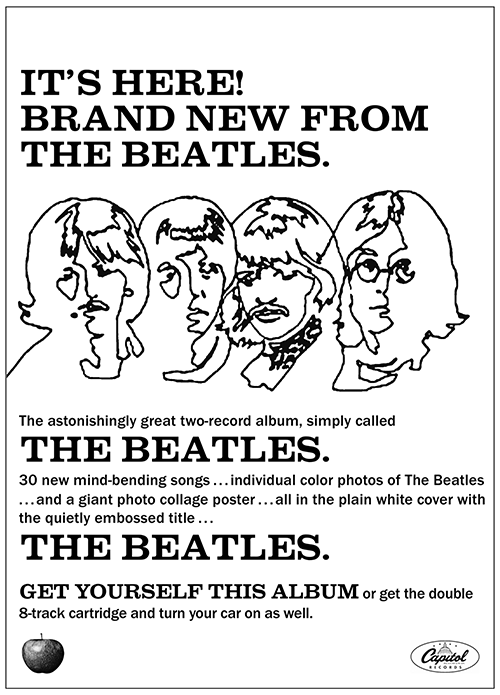
Promotional poster issued by Capitol Records 1968.
It spent seven weeks at the top of the U.K. charts, (including the entire competitive Christmas season) until it was replaced by the Seekers’ Best of the Seekers on 25 January 1969, dropping to #2. However, the album returned to the top spot the following week, spending an eighth week once again in the #1 position on the charts. It returned to the top spot for a final week on 1 February 1969, then spent a further four weeks in the top 10, and a total of 24 weeks in the top 40.
In the United States, the album was received with huge commercial success. Although it carried a list price of $11.79 (a single album was selling for $3.98), their double album The Beatles sold 4 million units during its first four weeks alone, a record for any double album up to that time. It debuted at #11 on the U.S. charts, then reached #2, and finally peaked at #1 in its third week, spending a total of nine weeks at the top. In all, The Beatles spent 155 weeks on the Billboard 200. According to the Recording Industry Association of America (RIAA), The Beatles is The Beatles’ best-selling album at 19-times platinum and comes in at #12 in the list of the best selling albums of all time.
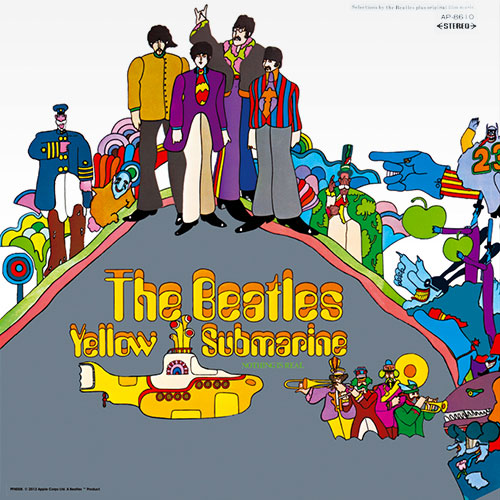
The Yellow Submarine soundtrack album released on 13 January 1969 in the U.S. and on 17 January 1969 in the U.K.
The White Album was particularly notable for blocking the Beatles follow-up album, Yellow Submarine, which was released on 13 January 1969 in the U.S. and on 17 January 1969 in the U.K. It peaked at #3 on 8 February 1969, the same week The White Album was dominating the second position on the charts. It then spent another four weeks in the Top 10 before dropping down the charts. In all, The Beatles spent 24 weeks on the U.K. charts, a far cry compared to the over 200 weeks spent by Sgt. Pepper.
The Mono Version
The Beatles was the last Beatles’ album to be released with a unique, alternate mono mix, albeit one issued only in the U.K. and a few other countries. Twenty-nine of the album’s 30 tracks, Revolution 9, which was a direct reduction of the stereo master, being the only exception, exist in official alternate mono mixes. Several of these mono mixes are quite different from the stereo versions, such as Helter Skelter eliminates the fade-in at the end of the song (and Starr’s ending scream), and the fade-out of Yer Blues is 11 seconds longer on the mono mix.
Beatles’ albums after The Beatles (except Yellow Submarine in the U.K.) occasionally had mono pressings in certain countries such as Brazil, but these editions, Yellow Submarine, Abbey Road and Let It Be, were in each case fold-downs from the regular stereo mixes.
By 1968 in the U.S., mono records were already being phased out, the U.S. release of The Beatles was the first Beatles LP to be issued in the U.S. in stereo only. The mono version of The Beatles was not made available worldwide on 9 September 2009, as part of the Beatles in Mono CD boxed set released by Apple Records. A reissue of the original mono LP was released worldwide in September 2014.




